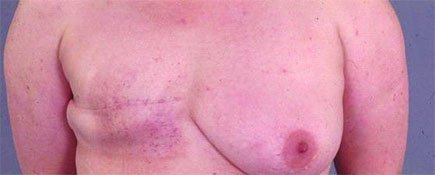-
American Cancer Society Guidelines for the Early Detection of Cancer
American Cancer Society Guidelines for the Early Detection of Cancer
The American Cancer Society recommends these cancer screening guidelines for most adults. Screening tests are used to find cancer before a person has any symptoms.
-
Diet and Physical Activity: What’s the Cancer Connection?
Diet and Physical Activity: What’s the Cancer Connection?
How much do daily habits like diet and exercise affect your risk for cancer? Much more than you might think. Research has shown that poor diet and not being active are 2 key factors that can increase a person’s cancer risk. The good news is that you do something about this.
-
TREATMENT
Cancer treatment is improving, saving lives and extending survival for many people. Depending on various factors, treatment options may include surgery, radiation, immunotherapy, chemotherapy, hormone therapy, or targeted, local therapy, among others. These treatments might be used alone or in combination. Clinical trials evaluate the benefits of new therapies and broaden the options available to patients.
This section includes treatment trends for cancer sites for which there are available data trends and definitive treatment guidelines based on rigorous evidence of benefit to patients, including bladder, breast, colorectal, kidney, lung, ovarian, and prostate cancers.
-
Know about your health
You’re smart. You’re responsible. You’re highly motivated to keep your family healthy – and having adequate health insurance coverage is part of that. But learning what you need to know about insurance in order to make good decisions can be overwhelming. That’s where we can help.
All Categories - Featured
TIPS TO DETECT BREAST CANCER EARLY

Breast cancer is a condition that is quickly becoming a very common occurrence, and experts say that although a person might be genetically predisposed to the condition,
Do Anyone Want To Know About Vulvar Cancer

About the vulva The vulva is a woman’s external genitalia and is made up of the skin and fatty tissue that surround the clitoris and the openings of the vagina and urethra. The fatty tissue makes up two folds
Info on Lung Cancer

Lung cancer is the second most commonly diagnosed cancer among American men and women. The American Cancer Society estimates about 221,130 new cases of lung cancer will be diagnosed in the U.S. this year. The most common type is non-small cell lung cancer, accounting for 85 to 90 percent of cases.
Blood Cancer - Causes and Treatment

Blood is a part of the body. Blood has different components sch as red blood cells, white blood cells, platelets and plasmaThe red blood cells (RBC)

















